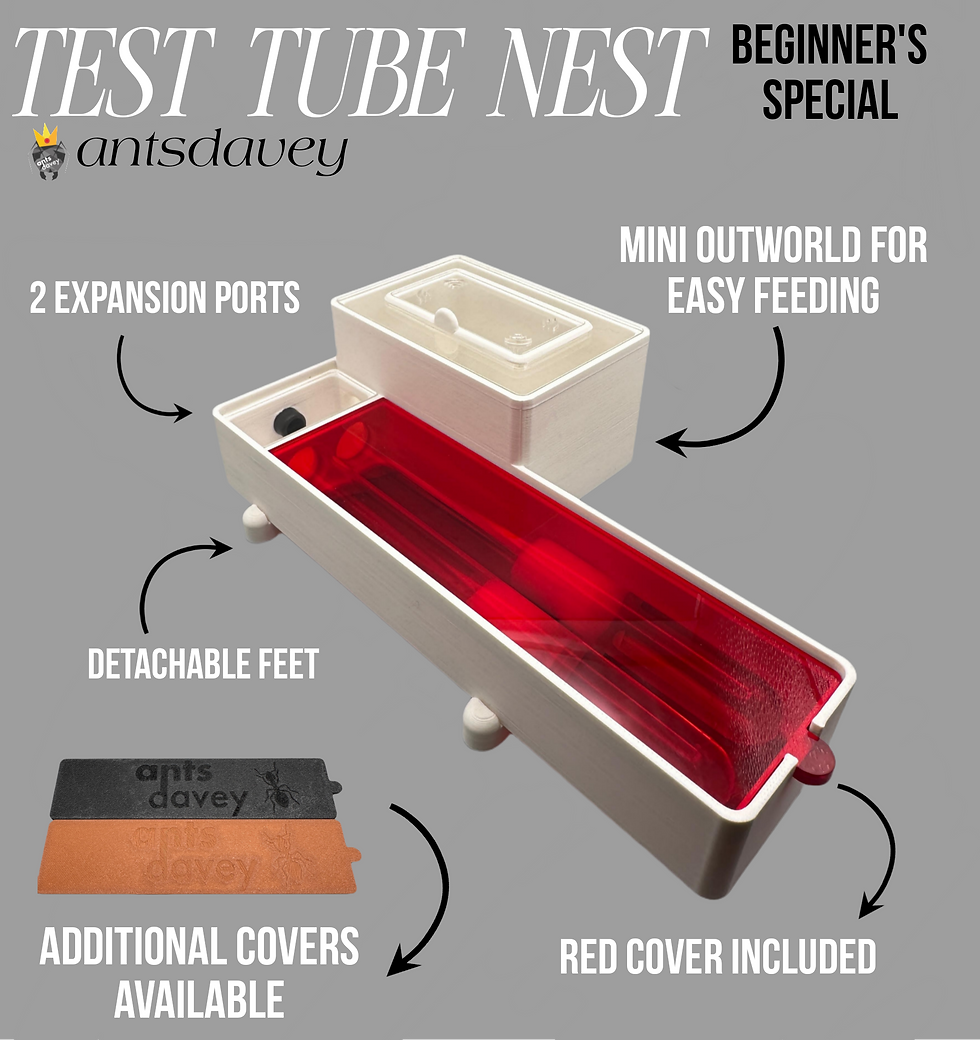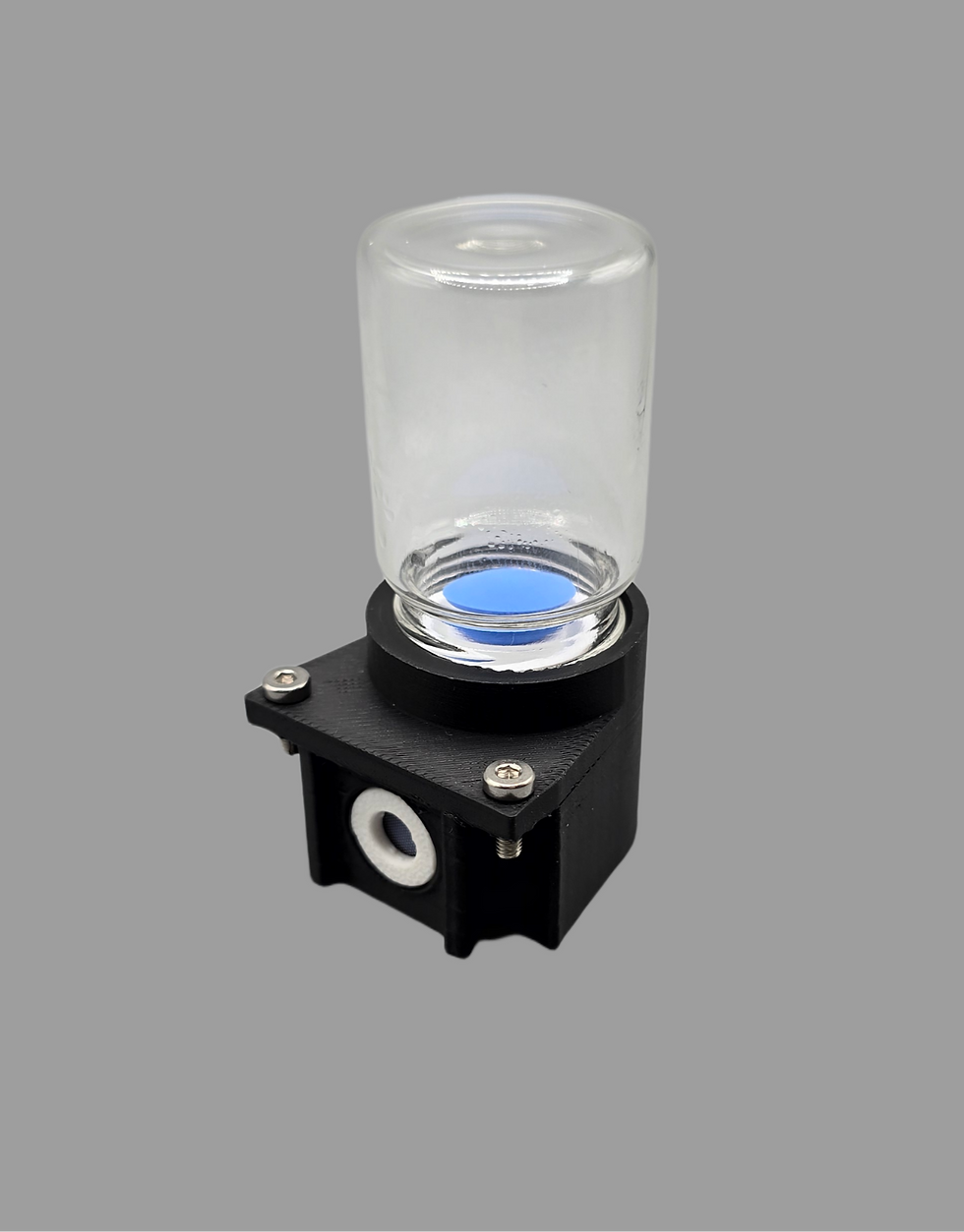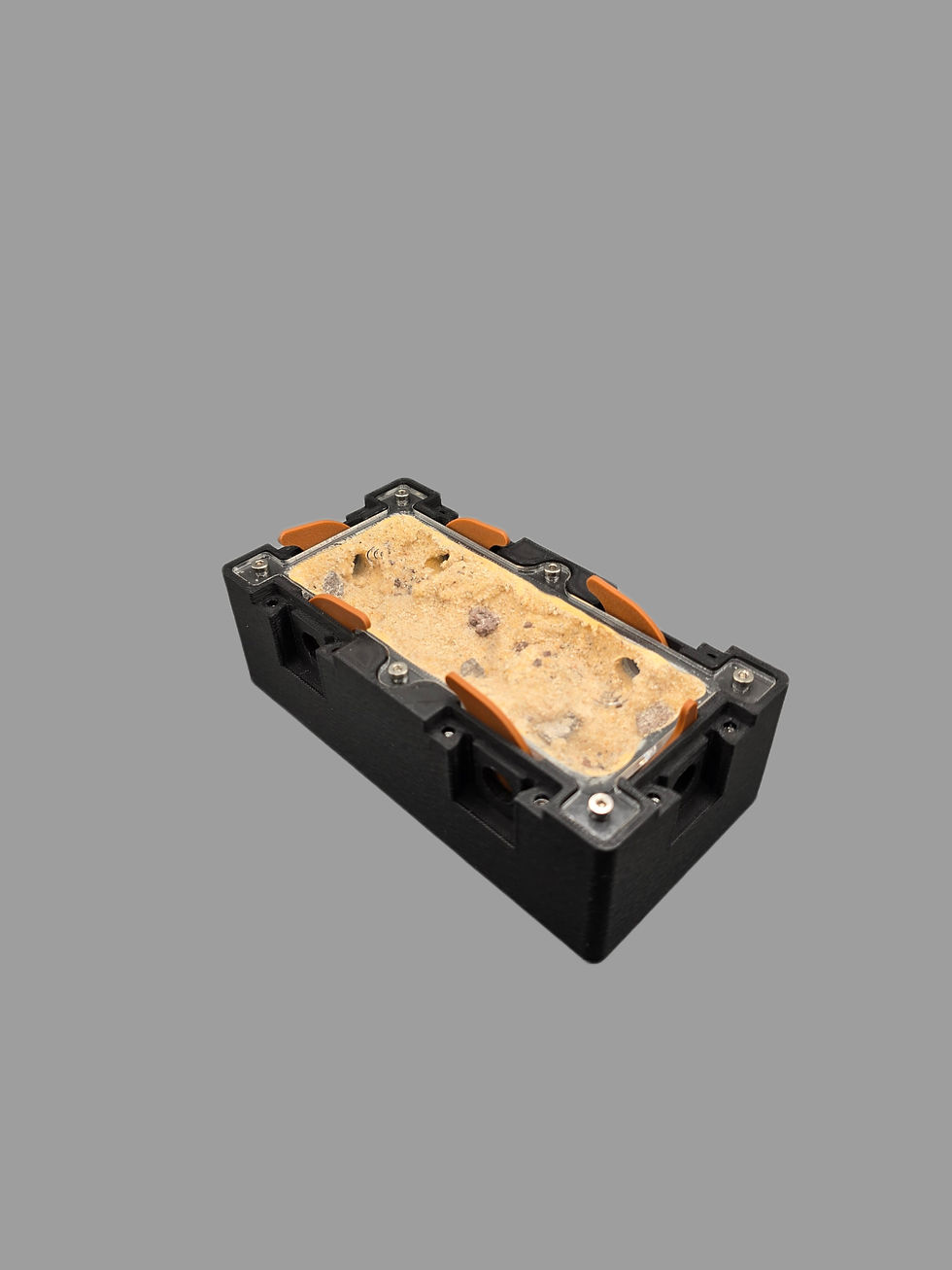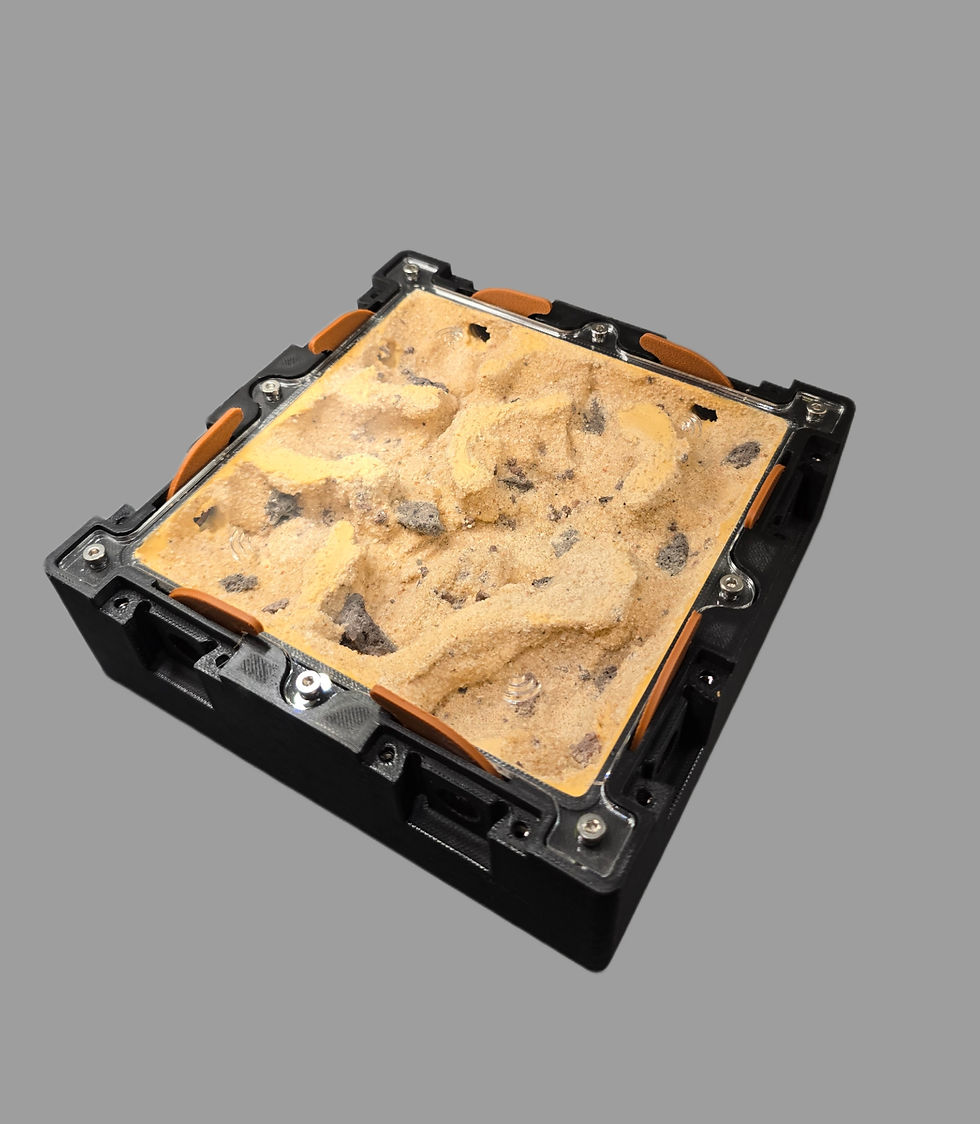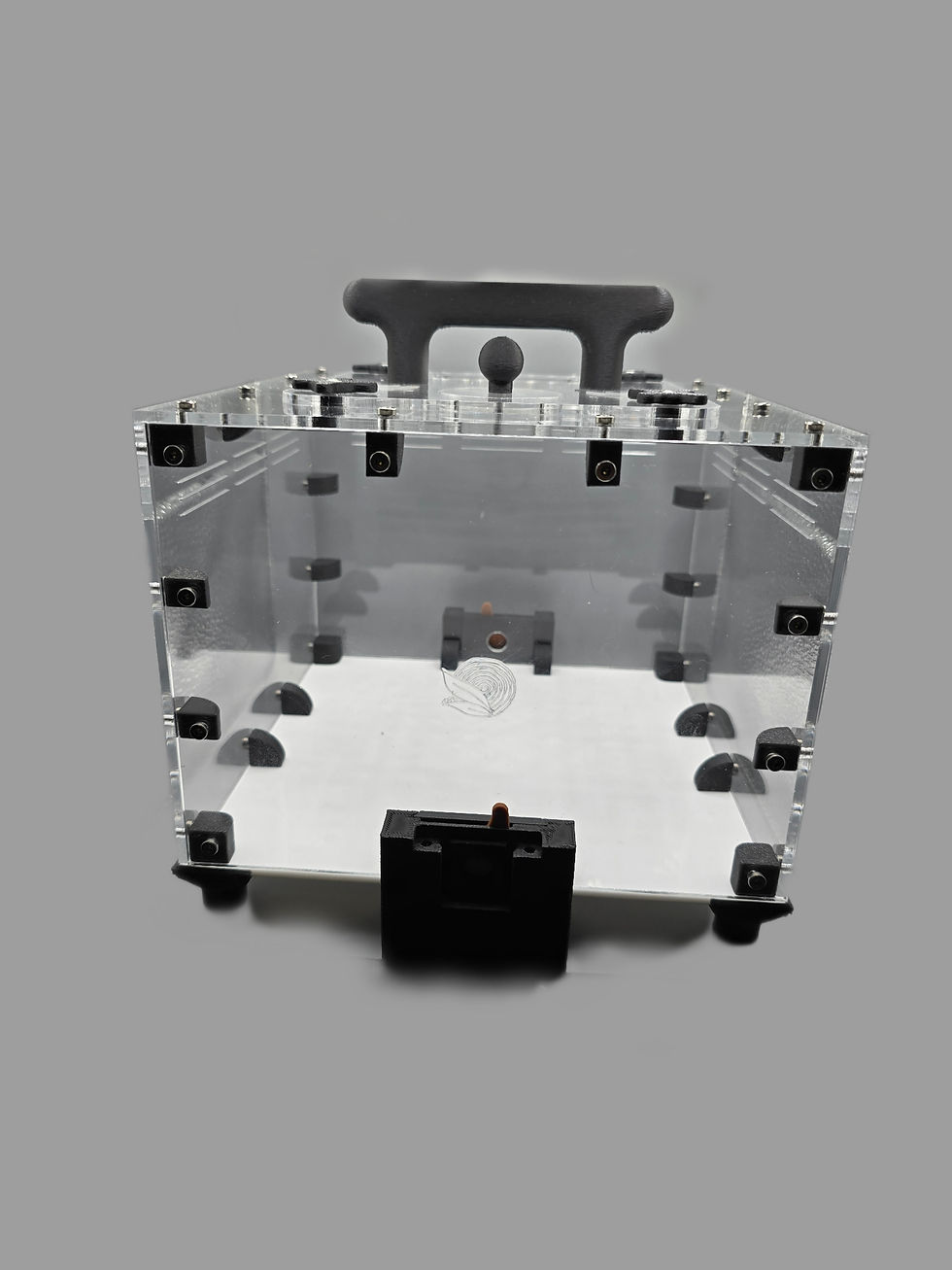About Polyrachis dives
South and Southeast Asian Species - Referred to as 'Weaver Ants' because of their habit of binding leaves together using larval silk to build large, complex nests.
Suitable for: These ants are not ideal for beginners. They require more space than most species, need good heat management, and have large colonies that can quickly outgrow small setups. They’re an active, fascinating species to keep, but best suited to intermediate or advanced ant keepers.
Temperature and Humidity
- Nest 27- 30°C - Outworld 22- 30°C
- Nest 60- 80% - Outworld 50- 90%
Hibernation
No – this is a tropical species and does not hibernate.
Diet
- Water (at all times).
- Carbohydrates like byFormica Sunburst Ant Nectar/ honey water or other.
- Protein like fresh-killed insects or other.
Founding Queen and Ant colony size
- Semi-claustral (with feeding Queen).
- Polygyne (Multiple Queens per colony)
- Inbreeding (Can inbreed and multiply the number of egg-laying Queens)
- 10,000 Workers to one Queen. Can easily reach 50,000 workers with multiple Inbreeding Queens.
Nest type/ Ant farm
- Acrylic
- Glass
- Natural setup
- Polyrhachis dives colonies don't need the typical separate nest and outworld. They will primarily nest in the outworld. A tall acrylic/ glass setup will be perfect as they like to weave their nest elevated.
Ant Sizes
- Polyrhachis dives Queen 10mm - 12mm
- Minor/ Media Workers 7- 10m
Bite/ Sting/ Formic acid
They try to bite but are unable to pierce the skin. They do spray formic acid which can sting a little if it gets inside a cut.
Description: Polyrhachis dives are a tropical Asian species of weaver ant. Instead of nesting underground, they build large nests by weaving leaves, dead leaves, bits of sticks and other materials together with silk produced by their larvae. Colonies grow very large and require a lot of space. They are highly active, aggressive hunters and rely on teamwork to overpower prey. They're very defensive and you may often spot one that is sat on their gaster, outside their nest, ready to spray formic acid at any little disturbance. Their defensive stance is to sit on their gaster with the tip pointed up. In the wild, Polyrhachis dives nest in trees and shrubs, often creating sprawling multi-nest colonies. They can forage widely and are quick to defend their territory. Colonies are polygynous and they inbreed so they can reach tens of thousands of workers, making them a spectacle in captivity.
Advice from AntsDavey
Polyrhachis dives thrive in warm conditions, with colonies doing especially well around 30°C. Our founding colonies are kept in a simple tub-and-tube setup, which shows their ability to adapt readily to most nest types. What makes this species so popular, however, is their unique ability to weave their own nests using larval silk.
For housing, a tall storage box, acrylic tank, or glass cube works well. Provide vertical climbing materials such as driftwood, cork, and sticks. On the enclosure floor, add a mix of moss, coco fibre, and other natural substrates to mimic a forest floor environment.
To heat, you can either use a heat mat taped to the side of the enclosure as this often encourages them to nest against it which giving you a great view once you peel it back. Alternatively, a heat bulb can be used, but ensure you regulate the temperature carefully to avoid overheating.
Adding springtails or other clean-up crews is also recommended, as they help reduce mould and keep the setup healthy.
Before ordering please review both below
Polyrhachis dives
All UK orders are sent the same day when placed before 12 PM on MON-FRI unless stated otherwise at the top of the website's home page.
Please read the full alive upon arrival guaranteed terms and conditions, under the 'Terms & Conditions' section.










